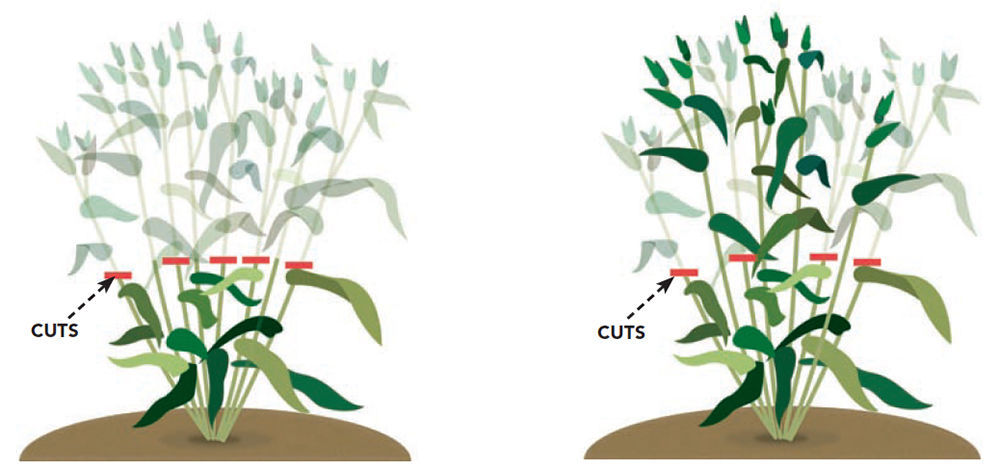
Pretty much any gardening book that’s worth its salt mentions the Chelsea Chop—but most do only that. The introduction of the concept is usually followed by some variation of this sentence: “Cut the plants back by a third or half to delay bloom and limit size.” But the how, why, and what are rarely discussed. The Chelsea Chop can be used to great effect if you’re trying to create peak season combinations. It often allows you to ensure that plants which don’t normally bloom in tandem with each other reach their peak at a similar time. There are several other benefits too, as well as some drawbacks.
This article first appeared as a sidebar in the article Peak Season Combos in Fine Gardening Issue #188
What is it?
The Chelsea Chop is a method of pruning that limits the size, controls the flowering season, and often decreases the flopping of a number of herbaceous perennials.
When do I do it?
The Chelsea Chop got its name from the famous garden show that takes place in England in late May— which is historically when the pruning method should be used. However, depending on where you live in the country, the chopping is best done in late spring or early summer, or when the plant has a fairly substantial amount of vegetative growth.
What is the upside?
Typically plants aren’t as tall or leggy, so they may not need to be staked or supported. The flowers may be smaller but in many cases are more numerous. This happens because the removal of the top shoots enables the side shoots to branch out more.
Are there drawbacks?
You can’t do the chop on all summer-blooming plants— for instance, woody subshrubs don’t respond well. Also, if your spring has been particularly dry, performing such a drastic pruning may do more harm than good to your plants, sending them into a shock that they may not recover from.
What plants are ideal candidates?
Many summer- and autumn-flowering perennials, such as these, are perfect for the Chelsea Chop.

|
How do I do it?
There are two ways to do this simple pruning.

| Method 1
Chop back clumps of perennials by one-third to one-half using shears. This will delay the flowering until later in summer and keep plants shorter and more compact. |
Method 2
Cut only half the stems back on a plant, which will extend the season of flowering rather than delay it. |


















Comments
Installing new software’s, presence of security software’s which are constantly updated, frequent updates for delete all browsing history bing Windows and the presence of malwares can slow down Windows.
Log in or create an account to post a comment.
Sign up Log in